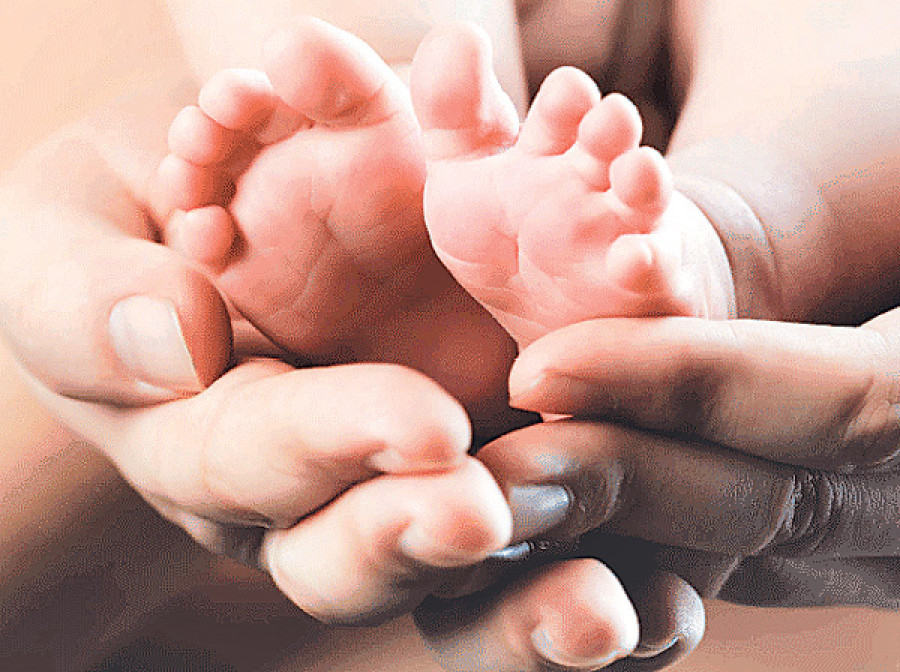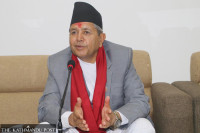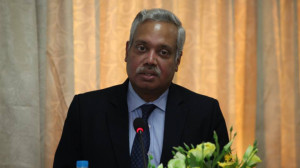National
Huge cuts in infant, child mortality
As the government rolled out its plans on Thursday for the next two decades to further reduce the deaths of newborns and stillbirth, Nepal has made a “phenomenal” success in reducing the mortality of children under five years old.
Manish Gautam
As the government rolled out its plans on Thursday for the next two decades to further reduce the deaths of newborns and stillbirth, Nepal has made a “phenomenal” success in reducing the mortality of children under five years old.
The under-five mortality has been reduced by 76 percent from 162 deaths per 1,000 live births in 1990 to 38 in 2014. Also, the infant mortality rate, the chance of dying of a child in a year after its birth, has decreased from 99 per 1,000 live births to 33 during the same period.
On Thursday, the government released “Nepal’s Every Newborn Action Plan (NENAP)” that aims to reduce newborn mortality rate (NMR), by 11 deaths per 1,000 live births in the next two decades, which was 23 in 2014. It has also set a target to reduce stillbirth, babies who are dead by the time they are delivered, from 18 per 1,000 live births in 2015 to 13 by 2035. There is a particular focus on NMR because the babies dying in the first 28 days after birth contribute significantly to the under-five mortality despite the drastic reduction.
While the Health Ministry prepares for an ambitious undertaking, experts said the future gains can be made more tangible by learning from the experience.
The community-based programmes spearheaded by Female Community Health Volunteers (FCHVs) have played a major role in reaching out to mothers and their family members and promoting safe behaviours that would include the promotion of nutrition and urging them for a regular follow-up at health facilities.
“This effort is fantastic because the FCHVs could reach out to each mother and help them visit the nearby health centre,” said Dr Ashish KC, child health specialist at Unicef Nepal.
Nepal has a network of over 50,000 FCHVs who have been at the forefront of almost all the public health programmes. It is because of the persistent efforts of “barefoot doctors” that Nepal was able to reduce the maternal mortality and neonatal mortality and to grab the prestigious Millennium Development Goal Award in 2010.
Dr KC also stressed that the presence of Skilled Birth Attendance (SBA) at health facilities and massive establishment of birthing centres has helped a lot. Data from the Health Ministry shows that there over 1,700 birthing centres while 65 percent of the deliveries in the country are assisted by the SBAs. The availability of maternity care in other health facilities has also been an incentive for mothers to go on a routine check and address any complications that might arise during child delivery.
While the ministry has made strategic investments in improving access to birthing centres and management of emergency services at district hospitals, closer to where the people reside and critical to the survival of newborns, there are also other factors that have likely contributed. The non-health sectors including access to education, transportation and communication have an equal contribution.
“More girls, today, are enrolled into formal education, a contributor to improving child survival and decreasing fertility rates,” said Amit Aryal, a public health expert. “There are increasing road networks across the nation that make it easy for people to access healthcare. Access to information and knowledge has expanded with the ownership of mobile phones and other forms of electronic media like FM stations.”
In the future endeavours, he said, the ministry must continue to look for ways to reach pockets of population that remain outside the purview of public services: select underserved populations, people disadvantaged by geographical and cultural barriers.
“The ministry also must urgently look into improving quality of care, if further improvements in newborn mortalities are to be reached, a challenging feat for the sector,” said Aryal. “For this, the country needs to ensure ‘better’ care with targeted approaches to improving the performance of both public and private health institutions.”
Factsheet
- Newborn mortality rate: 23 (in 2014) per 1,000 live births from 53 (in 1990)
- Stillbirth rate: 18 per 1,000 live births (in 2015)
- Under 5 mortality rate: 38 per 1,000 live births (in 2014) from 142 (in 1990)
- Infant mortality rate: 33 per 1,000 live births (in 2014) from 99 (in 1990)
Factors
- Contribution of Female Community Health Volunteers
- Presence of skilled birth attendance in 65 percent deliveries
- Availability of maternity care in health facilities
- Access to education, transportation, and communication increased by expansion of mobile phones and FM radios




 14.12°C Kathmandu
14.12°C Kathmandu















